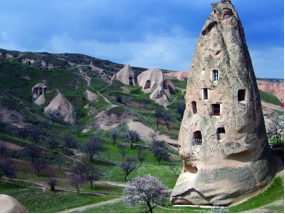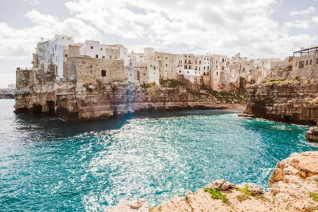SYLLABI : SCI-Arc Fall '20 - Second Studio
- rotoark
- Sep 9, 2021
- 6 min read
Updated: Sep 10, 2021
VS F20 : Second Studio
Vertical Studio Syllabi
By Professor Michael Rotondi, FAIA
Assistant Professor Nels Long
Abstract
With the world working remotely and relying on zoom, slack, and other video and screensharing applications, the world of architectural design and education that largely exist within the virtual realm already have not taken advantage of the full range of virtual tools for making and meeting.
Games have come a long way in the past five years and many sandbox games (that allow for user generated content) now offer multiplayer and collaboration modes. The studio this fall will be hosted entirely within one of a number of virtual worlds within the Core platform, and as such the requirements of the projects will be based on that virtual environment of Core not our physical world.
At the same time however, we will be using the virtual world to better study and convene with our physical world. Our worldbuilding process will include narrative development (experienced as storylines in our gameplay), environmental design, and architectural construction. We will draw on stories from indigenous peoples like the Hopi, the Inuit, and the Aboriginal to define the organization of positive form and negative space, through terrain modification, celestial manipulation, and scalar shifting. We are creating modern day mythologies, experiences through architectural form, in virtual realms.
Using the content library available to us in Core, we will perform a series of additive and subtractive operations to develop our architectural product. Beyond simply kit-bashing together elements, students will be encouraged to push the functional limits of the Core platform, scaling, stretching, and retexturing library objects so that they work within the constraints of the studio. Finally, students are encouraged to seek ways to gamify the experience within their world according to the creation story / design narrative they have developed throughout the studio. Objects may act as diagrams of the systems that create them. Easter eggs, and other hidden tokens and connections may increase viewer participation.
Critiques throughout the studio will performed ‘in game’ with avatars and chat features, while midterm and final reviews will be live streamed for guest critics unfamiliar with the interface to participate.
Our Mission
As xenologists we operate out of SCI-Arc from the center of the Middle Plane to study the alien lands around us. The Middle Plane itself is made up of four elemental zones: Earth/Ground, Air/Void, Water/Liquid, and Fire/energy.
These zones are bordered by the Shore the Horizon to the North, the Shore of Combustion to the east, the Shore of Erosion to the West, and the Shore of Causation to the South.
Each of these directions in turn are maintained by guardians whose totems are hidden throughout the many realms. If discovered these totems will give you the advantage in the mission you seek.
It is our job to study these foreign environments. To learn from them, occupy them, and bring the knowledge of our experiences back to share with our community.
To aid us in our quest we have access to the Lower Plane. Accessible through individual stations at SCI-Arc, these portals take us to the zone of your study through visualization and storytelling.
Also available to us is the Upper Plane of reality. Here is a collection of characters and places that make up the myths and stories from past civilizations to guide your journey.
Through this many dimensioned reality flows time. Without it there would be no causation, no reaction, and no completion.
Objective 1: Orientation (1 week)
Immerse yourself in the Core game platform
Explore our home world from which participants can portal into their respective projects, virtual showcases of platform functionality, and discover Easter eggs that give you a competitive edge
Select an elemental world, clone it, and send its link to the instructors to link to the hub.
Learn level design techniques you should take advantage of in the virtual space such as:
Experiments with gravity
Underwater Post Processing Filter
World wide jump value
Non-Euclidian / Non-Linear circulation
Teleportation
Mirrors
Interactive components
Buttons
Switches
Portals
Virtual Materiality
Render Properties
Physical Properties
Use of primitives and object library to develop space and form
Kit Bashing
Foliage Modifier
Object Generator
Opportunity for gamification, competition, or leveling up
Objective 2: Environmental Design (2 weeks)
The map for this studio has been defined in 4 elemental zones representing 4 unique relationships with the context: Earth/Ground, Air/Void, Water/Liquid, and Fire/energy. Each student must select one zone to inform their projects.
Working from this base terrain begin to make edits, either cutting away or filling in certain areas, sculpting the topography according to your creation story to create space in which to construct form, or form in which to enclose space.
Work out the details of navigation. Will you follow traditional Earth-based circulation methods or instead, will you impose virtual systems on your environment?
Create a set of flora and fauna which plays into the narrative of your experience.
Define a day-night cycle as well as any celestial or cosmological designs you wish to implement.
Develop a creation story to act as the basis for your design narrative based on one of the indigenous cosmologies available.
Objective 3: Programmatic Design (3 weeks)
The story you are developing will be the basis for the architectural development you will begin in this phase. What are the worlds you are here to explore? Who lives there? How did they come to exist in this way?
As you begin to explore the depths of your story worlds what sciences from our world may play a role in better understanding this new world? Archaeology or Biology? Physics? Computational Sciences or Neurosciences?
Are there any new areas of study for which we do not have an established science?
What are the cultures that exist in these worlds, how do we better study them, and encourage their growth and development?
Keep a daily journal where you track your discoveries from the following:
Explorations in your Virtual World
Name key regions, passes, and trails and create wayfinding elements to add to your story
Resources you discover
Characters you meet and interact with
Ideas you have for new research, needs, and requirements
Program: Outposts for Virtual Explorers which celebrate both external and internal discoveries
Divide your world into the following zones based on the resources inherent to your worlds.
Housing
Food & Water Resources
Community Spaces
Research Laboratories
Cultural Centers for Practice or Creed
Learning Spaces
Every outpost requires attention to the following features:
Centralized or distributed programming?
Site specific design including topography, resource availability, etc
Circulation based on your myth
Programmatic proportioning
Integrated Systems Design
Contextual Materiality
Meeting spaces and Home rooms
Objective 4: Midterm (10/22/20)
Deliverables:
A fully navigable virtual environment
Display proficiency in Core features as presented and discussed throughout the semester
A 1 minute video illustrating well developed design narrative or origin story for your world and a programmatic experience based on your origin story
Create a 1 minute video that focuses on the following specific elements within your storyworlds.
This trailer will be shown as an intro to your project during midterm next week and we would like to have a few class sessions to work with you on it to focus and prioritize your work prior to then.
1. Worldbuilding: How is your world specific to your chosen zone (earth, air, water, energy)? What is your origin story and how has it been integrated into the creation of your world? How has materiality been used to convey a realistic experience? For example, ground covering, above ground, near water, or underground should all be defined as separate textures. Regions that act as boundaries between biomes (earth and water for example) should be detailed to represent the realistic complexity of those regions. How are areas illuminated? Is there only natural light? if not how is lighting produced?
2. Circulation: How do the occupants of your world move around? How is that specific to your zone, or to your mythology? what options have you explored besides walking or running? How has the character development in your story influenced the way your avatar's move about the world?
3. Programming: Shifting perspective from you being the creator of a new world to you being the explorer of a newly discovered world, what are the activities for which you need dedicated spaces? What sciences are specific to your newly discovered realm? What are the spatial requirements for those sciences? what are the support or services spaces your activities require? Places for you to live? to produce food? to share ideas? If you were landing in this place for the first time what would you build to support yourself?
4. Architecture: How has the programming been formalized through local materials? How does the architectural intervention provide the opportunity to experience different scales than you would in the environment alone.
Please do your best to create a 1 minute video that answers all of these questions. We will then work with you over the next two class periods to make sure it is where it needs to be prior to midterm.
This should be done using screen capture from Core and voice over. Please do not spend time developing anything outside of core. Please do not stop working on your virtual world in order to create this video. This video will be used as a tool for you to simplify and refine your existing environments.
Objective 5: Formal Development
Within Core your formal operations are limited to kit-bashing community objects. That doesn’t mean however that we expect your projects to resemble the games available in the Core Browser. As SCI-Arc students we expect you to maintain a higher level of design aesthetic and with proper investment you will be able to create anything you would outside Core.
In this phase we will begin to supplement your programmatic design through architectural interventions.
Objective 6: Interactive Design & Gamification
Totems
Side Quests / Challenges



Comments